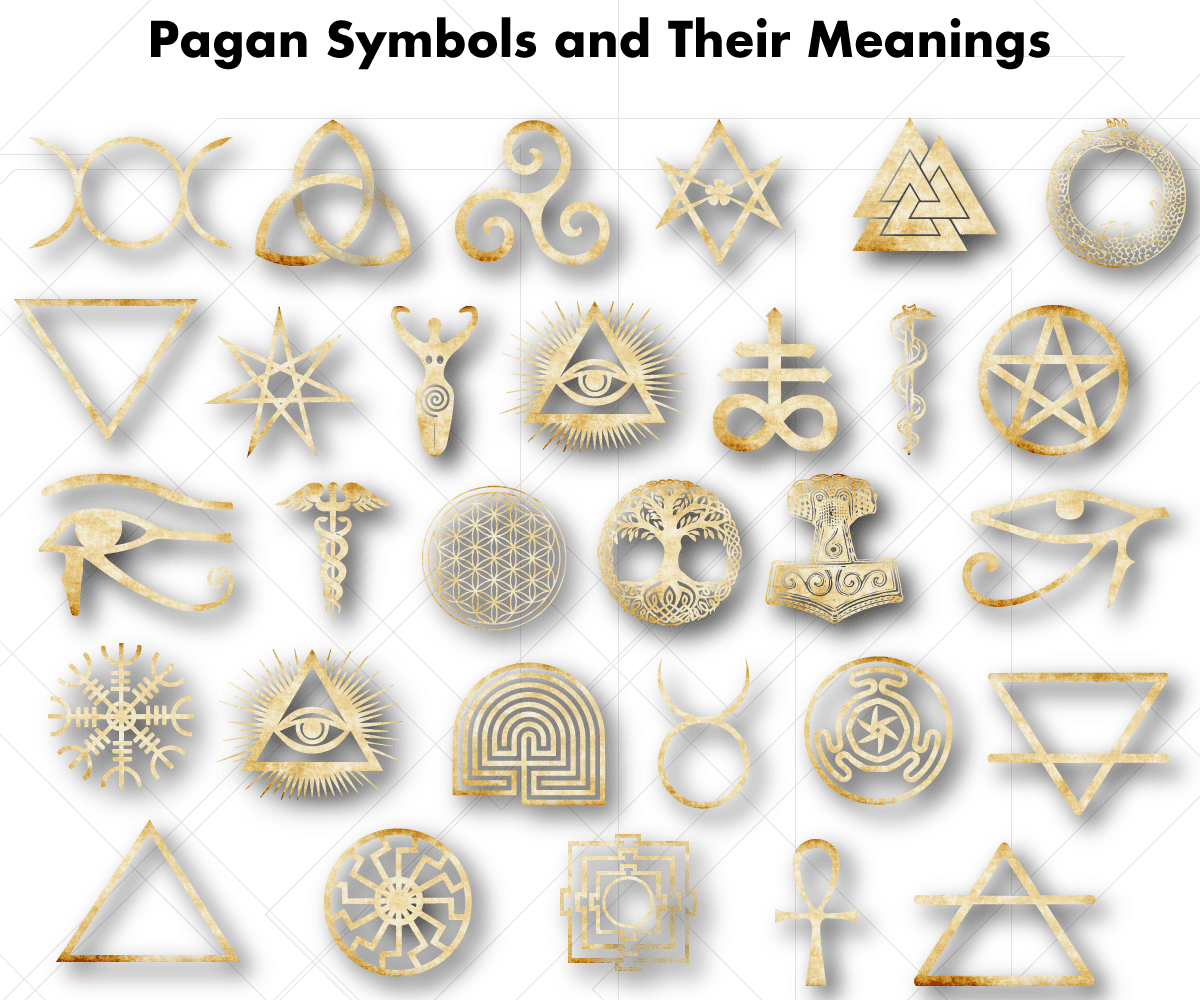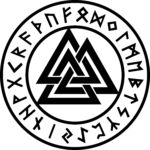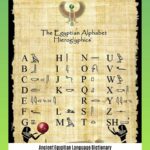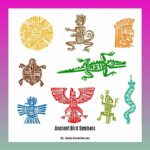Imagine yourself on an exciting adventure, stepping back into the past to discover the hidden meanings behind the captivating images and symbols created by ancient cultures. These mysterious markings, found on everything from cave walls to royal tombs, tell stories of beliefs, rituals, and the very essence of humanity. Join us as we embark on this journey, decoding the secrets and unlocking the profound heritage that these symbols hold.
Meaningful Ancient Symbols: Echoes of Our Shared Human Story
Imagine a language that transcends the boundaries of spoken words, a language that speaks to us through images and shapes. This is the language of ancient symbols, a language that has been whispering tales of humanity’s shared experiences for centuries.
Decoding the Visual Vocabulary
Ancient symbols are more than just pretty designs. They’re like tiny windows that offer us a glimpse into the beliefs, values, and aspirations of civilizations long gone. Take the Ankh, an enigmatic symbol from ancient Egypt. Its shape represents eternal life, a constant reminder of humanity’s longing for immortality. Or the wise Owl of Athena, perched on ancient Greek pottery, symbolizing the power of knowledge and wisdom.
A Global Tapestry of Shared Meaning
These symbols are not just confined to a single culture or time period. They emerged independently in different corners of the world, reflecting the universal experiences and desires of humankind. From the Yin-Yang symbol in ancient China, balancing opposing forces, to the sacred Lotus Flower in Buddhism, representing purity and enlightenment, these symbols transcend geographical boundaries, uniting us in our quest for meaning.
Symbols in Our Modern World
Even today, these ancient symbols continue to resonate with us. We find them woven into jewelry, adorning artwork, and even emblazoned on corporate logos. They serve as tangible reminders of our connection to the wisdom of our ancestors and the timeless themes that have shaped human civilization.
Unveiling the Meanings
To truly appreciate the power of these symbols, let’s delve into some of the most common ones:
| Symbol | Culture | Meaning |
|---|---|---|
| Ankh | Ancient Egypt | Eternal Life |
| Owl of Athena | Ancient Greece | Wisdom and Knowledge |
| Ouroboros | Various Cultures | Cycle of Infinity and Rebirth |
| Yin-Yang | Ancient China | Balance of Opposing Forces |
| Lotus Flower | Buddhism | Purity, Enlightenment, Rebirth |
Conclusion
Ancient symbols are more than just decorative motifs. They’re living echoes of our shared human story. They connect us to the wisdom of the past and remind us of the enduring themes that have shaped our culture. By unraveling the meanings of these symbols, we gain a deeper understanding of ourselves and the tapestry of our shared heritage.
- Dive deep into the fascinating world of ancient symbols and meanings, uncovering their rich history and cultural significance. ancient symbols and meanings
- Journey through the intricate world of Celtic symbols and discover their deep-rooted connections to ancient cultures and traditions. celtic symbols
- Unveil the enigmatic Gaelic symbols that have captivated generations with their profound spiritual and cultural significance. gaelic symbols
- Embark on an exploration of the rich Irish Celtic symbols, unlocking their unique stories and deep-seated connections to Irish heritage. irish celtic symbols
- Delve into the captivating world of Scottish symbols, tracing their lineage through centuries of history and cultural identity. scottish symbols
What is the Meaning of the Egyptian Ankh Symbol?
The Ankh, that iconic symbol of eternal life, has captivated us for centuries. But what does it truly mean? Let’s dive into its fascinating and ancient symbolism.
A Symbol of Life and Eternity
Picture a loop and a vertical line crossing through it. That’s the Ankh. The loop represents the womb, the source of life, while the vertical line symbolizes the male reproductive organ. Together, they represent the union of man and woman, the union from which all life springs.
Ancient Egyptians saw the Ankh as a key to eternal life. It was often found in tombs and temples, and it was believed that it opened the gates to the afterlife. For the living, it brought promises of vitality and longevity.
An Ancient Mystery
The Ankh’s intricate design is a testament to ancient Egyptian artistry. The Egyptians used it as a hieroglyph, calling it the “first cross.” It appears in numerous inscriptions, statues, and paintings, adorning everything from sarcophagi to jewelry.
Still Fascinating Today
The Ankh’s symbolic power continues to resonate today. Artists, designers, and jewelry makers incorporate it into their creations, bringing its timeless message of hope and renewal to modern life.
Key Points to Remember:
- The Ankh symbolizes eternal life, the union of male and female, and the life-giving force.
- It was used by ancient Egyptians as a “key to the afterlife.”
- It remains a popular symbol today, often used in art, jewelry, and design.
What does the Owl of Athena represent?
If you’ve ever noticed how the owl is connected to wisdom and knowledge, let’s dive into the fascinating story of Athena, the Greek goddess of wisdom and war, and her trusty companion, the owl.
In ancient Greece, owls were considered symbols of Athena’s sharp mind, keen eyesight, and skillful planning. Just like this bird that can see in the dark, Athena could uncover the truth and guide her followers towards knowledge.
Not only was the owl linked to Athena personally, but it also became a symbol of the city of Athens. Athenians put the owl’s image on their coins, pottery, and even public spaces. They even kept owls at the Temple of Athena, believing they would bring wisdom and protection.
The legacy of Athena and her owl still lives on. To this day, when we say “wise as an owl,” we’re referring to someone who’s smart and can see things clearly. The owl has become a symbol of education, wisdom, and the search for knowledge.
Some Fun Owl Facts:
- Symbol of the city of Athens: Athenians used the owl to represent their values of intelligence, strategy, and warfare.
- Temple of Athena’s guardian: Owls were believed to bring wisdom and protection to the citizens of Athens.
- A nighttime adventurer: As a nocturnal bird, the owl’s ability to see in the dark was seen as a reflection of Athena’s ability to guide people through ignorance.
- A symbol of intelligence: The phrase “wise as an owl” is still used today to describe someone with exceptional knowledge and understanding.
So, there you have it! The owl is associated with wisdom and knowledge because it was the sacred animal of the Greek goddess Athena, who was known for her sharp mind. Over time, the owl became a symbol of the city of Athens itself, representing its values of reason, strategy, and warfare. Today, the phrase “wise as an owl” is still used to describe someone who is exceptionally intelligent and insightful.
What is the significance of the Mandala in Buddhism?
For centuries, mandalas have captivated spiritual seekers and art enthusiasts alike. They are a profound intersection of art and spirituality, and in the Buddhist tradition, they take on a deep significance.
Meaning and Purpose of Mandalas:
Mandalas are sacred geometric patterns that are not just for admiring. They are like imaginary palaces for meditation. Each intricate element in a mandala represents wisdom or a guiding principle, helping you grow and transform spiritually.
They also help you understand the universe better. Mandalas reflect Buddhist cosmology, showing the universe and all its connections. This can help you grasp the nature of existence.
And if you are going through a tough time, mandalas are believed to have healing powers. They offer solace and guidance as you journey through life and discover who you are.
Creating a Mandala:
To make a mandala is like a meditation in itself. It takes a lot of patience and care. Buddhist monks spend countless hours arranging colorful grains of sand into intricate patterns. But here’s the catch: once the mandala is finished, they dismantle it. This is to symbolize that all things are temporary.
Symbolism in Mandalas:
Mandalas are not just random designs. They are filled with deities, symbols of nature, and geometric shapes that all have specific meanings. These elements come together to form a harmonious whole, reminding us that everything in existence is interconnected.
Conclusion:
Mandalas are a powerful tool in Buddhist spirituality. They help with meditation, spiritual growth, cosmic understanding, personal healing, and guidance. Whether you are a seasoned practitioner or just curious, the mandala has something to offer everyone. 
FAQ
Q1. What is the significance of the Ankh in ancient Egypt?
A1. The Ankh is an iconic Egyptian hieroglyph representing eternal life. It symbolizes the union of male and female energies and was often found in tombs, signifying the key to the afterlife.
Q2. How did the Owl of Athena embody wisdom and knowledge in ancient Greece?
A2. The owl was closely associated with Athena, the goddess of wisdom, foresight, and warcraft. It became a symbol of Athens, representing the qualities of reason, strategy, and intelligence.
Q3. What is the purpose of a Mandala in spiritual practices?
A3. Mandalas are sacred geometric patterns used in meditation, particularly in Buddhism and Hinduism. They represent imaginary palaces that guide spiritual growth, transform the mind, and aid healing by connecting individuals with their divine selves.
Q4. How do ancient symbols tap into our subconscious?
A4. Ancient symbols often contain deep meanings and subconscious associations. They can evoke emotions, memories, and archetypal patterns that resonate within us, providing insights into our collective cultural heritage and personal experiences.
Q5. Are ancient symbols only found in certain cultures?
A5. No, ancient symbols have been found in various cultures across the world. While specific symbols may have unique meanings within a particular culture, many represent universal concepts like eternity, wisdom, power, and rebirth.
- Senior at What Age: Benefits & Eligibility Guide - March 29, 2025
- Unlocking Senior Benefits: How Old is a Senior? Your Complete Guide - March 29, 2025
- Master Russian Politeness:A Guide to Saying Please - March 29, 2025
















